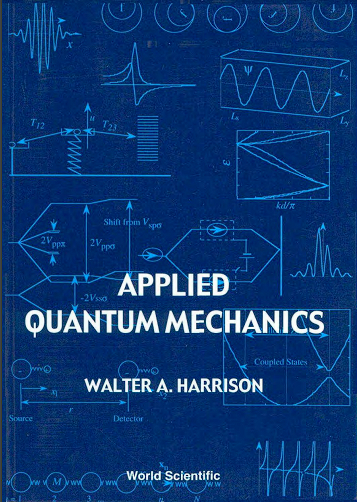
Applied Quantum Mechanics
Author: Walter A. Harrison. Category: Mekanika Kuantum Publisher: Cambridge University Press ISBN: 9789814365628The theory of quantum mechanics forms the basis for our present understanding of
physical phenomena on an atomic and sometimes macroscopic scale. Today, quantum
mechanics can be applied to most fields of science.Within engineering, important subjects
of practical significance include semiconductor transistors, lasers, quantum optics,
and molecular devices. As technology advances, an increasing number of new electronic
and opto-electronic devices will operate in ways which can only be understood
using quantum mechanics. Over the next 30 years, fundamentally quantum devices
such as single-electron memory cells and photonic signal processing systems may well
become commonplace. Applications will emerge in any discipline that has a need to
understand, control, and modify entities on an atomic scale. As nano- and atomic-scale
structures become easier to manufacture, increasing numbers of individuals will need
to understand quantum mechanics in order to be able to exploit these new fabrication
capabilities. Hence, one intent of this book is to provide the reader with a level of
understanding and insight that will enable him or her to make contributions to such
future applications, whatever they may be.
The book is intended for use in a one-semester introductory course in applied quantum
mechanics for engineers, material scientists, and others interested in understanding the
critical role of quantum mechanics in determining the behavior of practical devices.
To help maintain interest in this subject, I felt it was important to encourage the reader
to solve problems and to explore the possibilities of the Schrödinger equation. To
ease the way, solutions to example exercises are provided in the text, and the enclosed
CD-ROMcontains computer programs written in theMATLAB language that illustrate
these solutions. The computer programs may be usefully exploited to explore the effects
of changing parameters such as temperature, particle mass, and potential within a given
problem. In addition, they may be used as a starting point in the development of designs
for quantum mechanical devices.
The structure and content of this book are influenced by experience teaching the
subject. Surprisingly, existing texts do not seem to address the interests or build on the
computing skills of today’s students. This book is designed to better match such student
needs.
Back